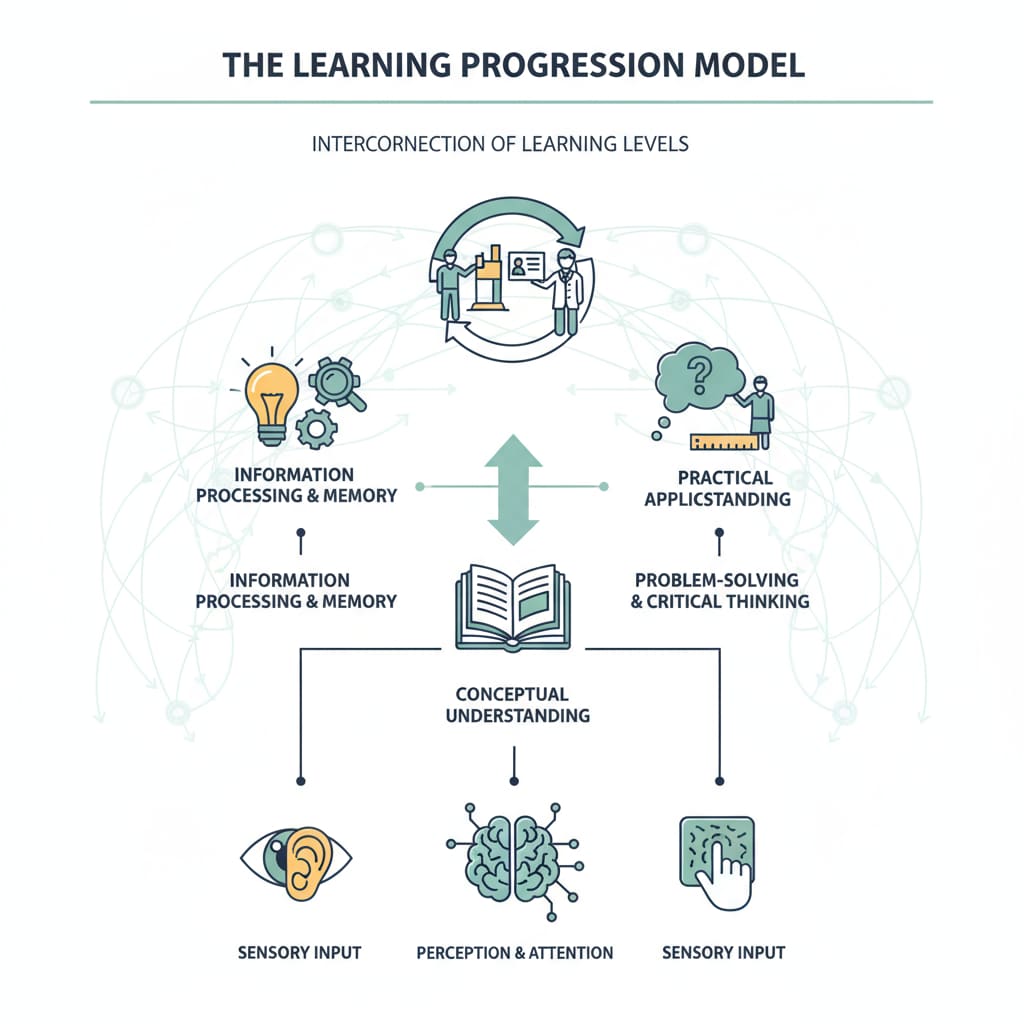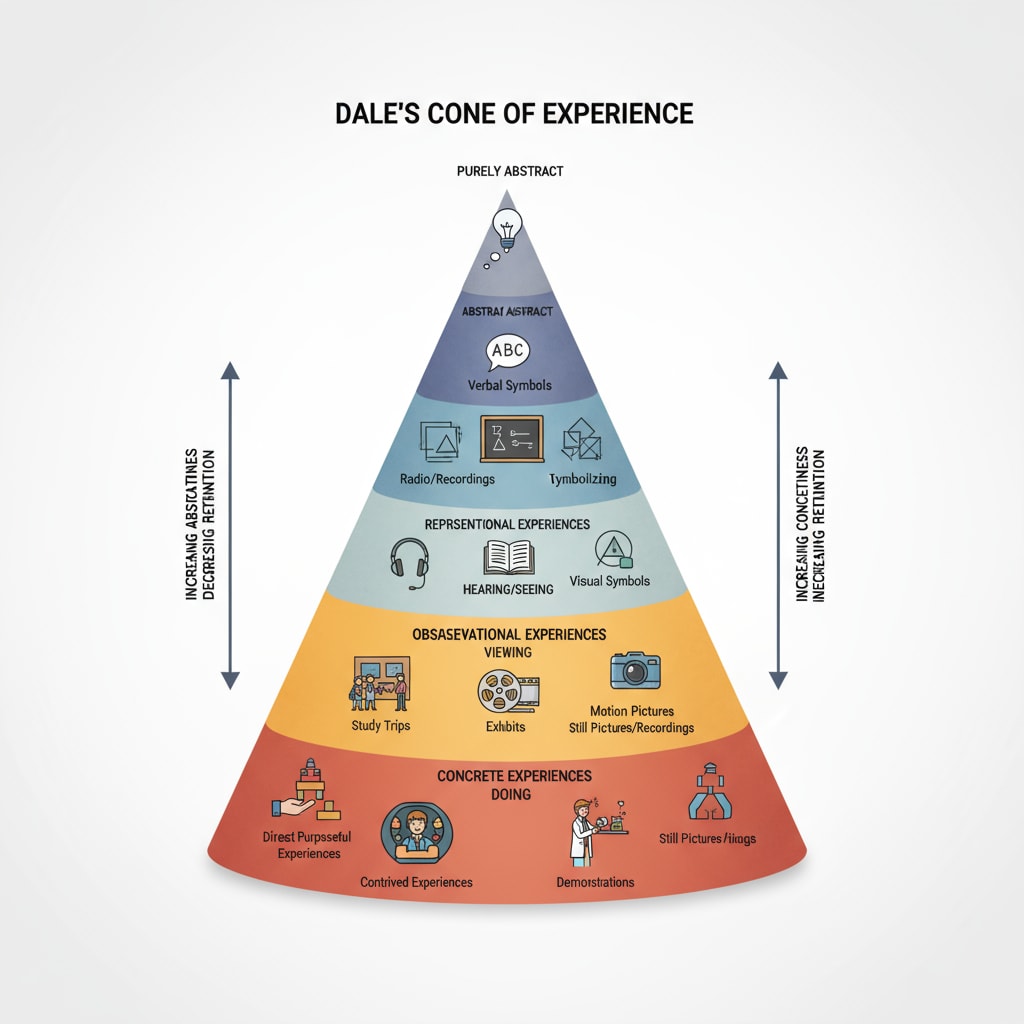Learning theories, cone of experience, hands-on learning, and multisensory experiences play crucial roles in the educational journey, especially in K12. The idea that the deepest level of learning comes from practical experiences has been a topic of interest for educators and researchers alike. Let’s delve into this concept further.

The Foundation of Learning Theories
Learning theories provide a framework for understanding how students acquire knowledge. For example,荀子’ learning层级理论 (Xun Kuang’s learning hierarchy theory) emphasizes different levels of learning. This theory posits that learning starts from simple “闻见” (hearing and seeing) and progresses to deeper levels of understanding through “践行” (practice). This ancient wisdom aligns with modern educational concepts. As we can see, understanding these theories is the first step in optimizing the learning process. Learning theory on Wikipedia
The Cone of Experience: A Visual Guide
The cone of experience, developed by Edgar Dale, is a powerful visual model. It shows that learning is more effective when multiple senses are involved. At the base of the cone are more concrete experiences like direct purposeful experiences and demonstrations. As we move up the cone, the experiences become more abstract. For instance, reading and listening are at the top. This model helps educators design lessons that engage students on a deeper level.

Students who are exposed to a variety of experiences along the cone are more likely to retain knowledge. Cone of experience on Britannica
Integrating these concepts into K12 education can transform the learning experience. Teachers can design activities that encourage hands-on learning and multisensory engagement. For example, science experiments allow students to use multiple senses while exploring scientific concepts. By doing so, students are not just memorizing facts but truly understanding them.
Readability guidance: In this article, we’ve explored how learning theories and the cone of experience inform hands-on and multisensory learning in K12. By understanding these concepts, educators can create more effective learning environments. Remember to use a variety of teaching methods to engage students’ different senses and promote deeper understanding.


